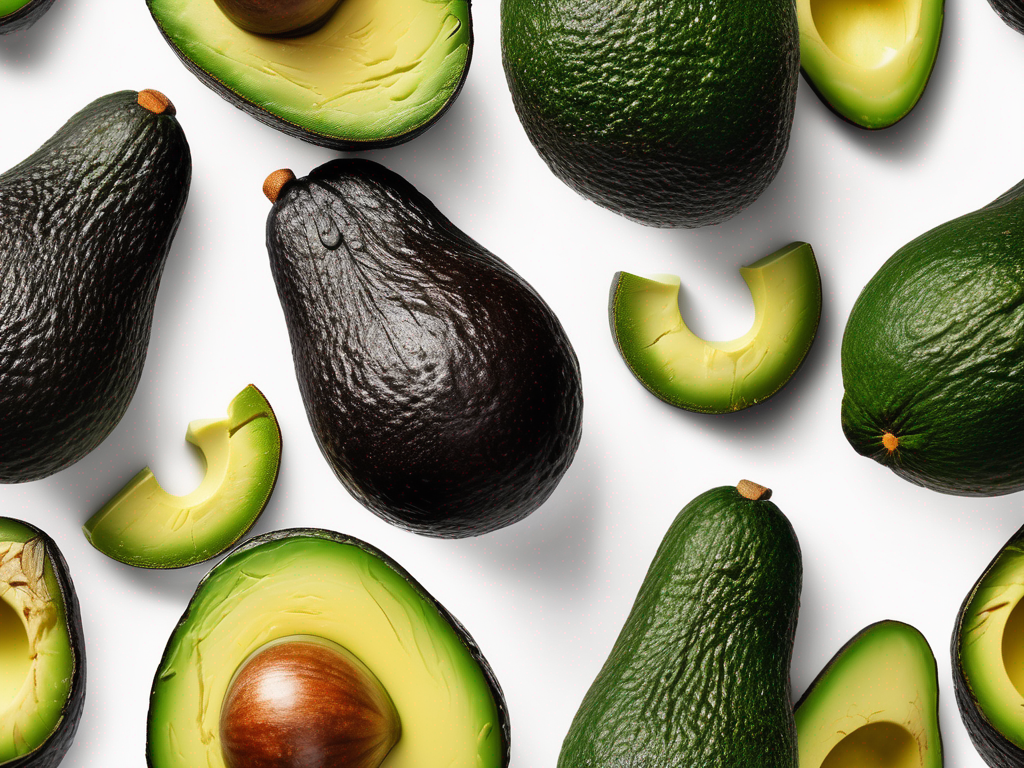
Preserving Fresh Avocados Whole: Tips to Extend Shelf Life
Get Your Free Food Safety Cheat Sheet
30 most common foods with instant answers. Print it and stick it on your fridge—completely free!
Preserving Fresh Avocados Whole: Tips to Extend Shelf Life
Fresh avocados are a versatile and nutritious fruit that can elevate the taste of many dishes. Whether you're making guacamole, salads, or avocado toast, it's essential to know how to properly store and preserve avocados to extend their shelf life. In this blog post, we will discuss practical tips for preserving fresh avocados whole to keep them ripe and ready to use for longer. (Fresh avocados whole)
Understanding the Shelf Life of Fresh Avocados
Fresh avocados, when stored correctly, can last for several days to a week. However, avocados are sensitive fruits that can quickly ripen and spoil if not handled properly. Here are some factors that can affect the shelf life of fresh avocados:
Factors Affecting Shelf Life
- Ripeness: The ripeness of an avocado at the time of purchase will determine how quickly it will spoil.
- Temperature: Avocados should be stored at the right temperature to slow down the ripening process.
- Humidity: Avocados prefer a slightly humid environment to prevent them from drying out.
- Handling: Proper handling and storage techniques can significantly impact the shelf life of avocados.
Tips for Preserving Fresh Avocados Whole
To help you make the most of your fresh avocados and prevent them from going to waste, here are some practical tips for preserving them whole:
1. Selecting the Right Avocados
- Choose avocados that are firm but yield to gentle pressure when ripe.
- Avoid avocados with blemishes, bruises, or soft spots.
2. Storing Unripe Avocados
- If your avocados are unripe, store them at room temperature to allow them to ripen naturally.
- To speed up ripening, place avocados in a paper bag with a banana or apple to release ethylene gas, which promotes ripening.
3. Storing Ripe Avocados
- Once ripe, store avocados in the refrigerator to slow down the ripening process.
- Keep ripe avocados in the crisper drawer to maintain proper humidity levels.
4. Preserving Cut Avocados
- To prevent cut avocados from browning, drizzle lemon or lime juice over the exposed flesh.
- Store cut avocados in an airtight container or wrap them tightly in plastic wrap before refrigerating.
5. Freezing Avocados
- If you have ripe avocados that you won't use in time, consider freezing them.
- Peel and pit the avocados, then mash the flesh with a little lemon juice before freezing in a sealed container.
Safety Precautions for Handling Fresh Avocados
While avocados are a delicious and healthy fruit, it's essential to follow proper food safety practices when handling and storing them. Here are some safety precautions to keep in mind:
- Wash your hands before and after handling avocados to prevent contamination.
- Use clean utensils and cutting boards when preparing avocados to avoid cross-contamination with other foods.
- Store avocados away from raw meats and other high-risk foods in the refrigerator.
- Discard any avocados that show signs of spoilage, such as mold, off smells, or unusual discoloration.
By following these tips and safety precautions, you can extend the shelf life of fresh avocados and enjoy them at their best. Remember that proper storage and handling are key to preserving the quality of avocados and reducing food waste.
In conclusion, fresh avocados are a delicious and nutritious addition to any meal, and with the right storage techniques, you can keep them fresh for longer. Whether you're enjoying them in salads, sandwiches, or as a topping, these tips will help you make the most of your avocados. Start preserving your fresh avocados whole today and enjoy their creamy goodness whenever you like! (Fresh avocados whole)
Related Posts
Here are some other articles you might find helpful:
Authoritative Food Safety References
These agencies and university labs inform every tip and health precaution we publish.
USDA FoodKeeper – Cold Storage Guidelines
Official refrigerator, freezer, and pantry timelines maintained by the U.S. Department of Agriculture.
Visit USDA FoodKeeperFDA Produce Safety Rule & Grower Guidance
Field-to-fridge handling practices that prevent contamination of fruits, vegetables, and leafy greens.
Visit FDA Produce SafetyCDC Foodborne Illness Prevention Hub
Surveillance-backed guidance on pathogens, symptoms, and steps to reduce foodborne illness risk.
Visit CDC Food SafetyUC Davis Postharvest Technology Center
University research detailing optimal storage atmospheres for produce after harvest.
Visit UC Davis PostharvestPenn State Extension – Home Food Preservation & Safety
Peer-reviewed extension bulletins on safe canning, chilling, and reheating practices.
Visit Penn State ExtensionGet Your Free Food Safety Cheat Sheet
30 most common foods with instant answers. Print it and stick it on your fridge—completely free! Want more? Upgrade to the complete guide with 70+ foods.
Scan your food directly and get instant safety info using our AI-powered camera feature.